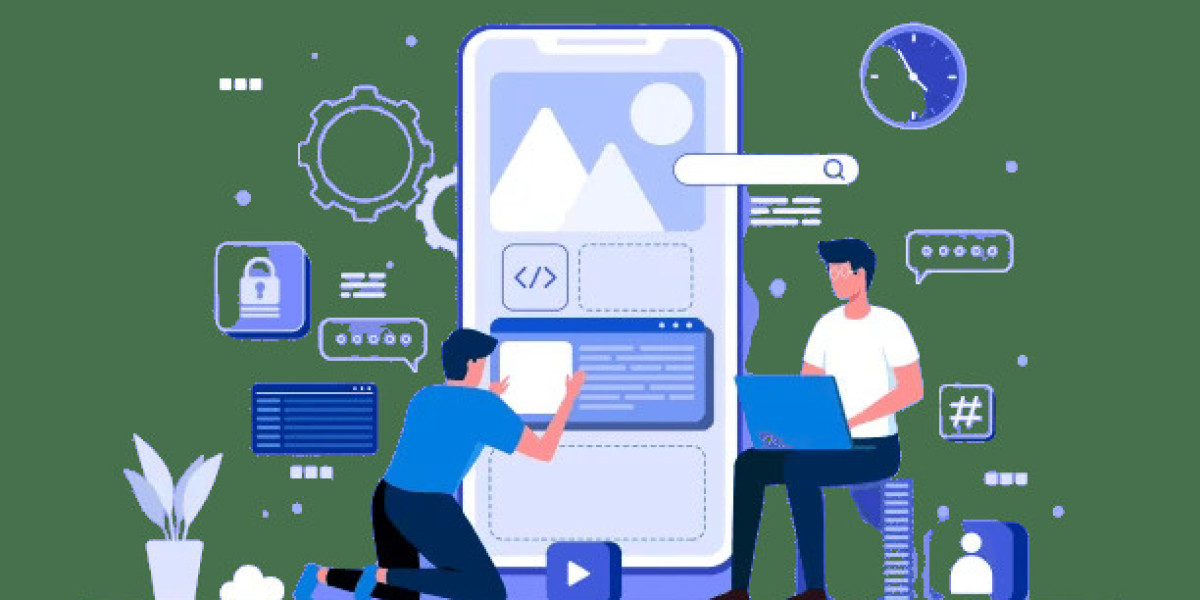Mobile app development is a complex and rapidly evolving field. As more businesses and individuals turn to mobile solutions, the demand for high-quality apps continues to grow. However, creating a successful mobile app involves overcoming several challenges. These challenges range from technical obstacles to business considerations. In this article, we will explore the top challenges in mobile app development in Dubai and provide practical solutions to help developers and businesses overcome them.
1. Defining a Clear and Effective App Strategy
One of the first challenges in mobile app development is defining a clear strategy. Without a strong plan, the development process can become unfocused, leading to delays, wasted resources, and ultimately, an app that doesn't meet user expectations.
Solution:
To overcome this, start by defining the core goals of your app. Understand the problem you are solving for your users and create a roadmap that outlines key features and functionalities. Conduct market research to determine what users expect and ensure that your app provides a unique value proposition. This strategy will help guide every phase of development, from design to launch.
2. Choosing the Right Technology Stack
The technology stack you choose plays a crucial role in the app’s performance, scalability, and overall success. With so many frameworks, programming languages, and tools available, selecting the right stack can be overwhelming.
Solution:
Research the pros and cons of different technologies based on your app’s requirements. For example, if you want to build a cross-platform app, consider using frameworks like React Native or Flutter. For performance-heavy apps, you may prefer a native app development approach using Swift for iOS or Kotlin for Android. Prioritize technologies that offer good community support, scalability, and compatibility with future updates.
3. UX/UI Design Challenges
User experience (UX) and user interface (UI) design are critical to the success of any mobile app. Poor UX/UI design can result in high user abandonment rates, poor ratings, and negative reviews.
Solution:
To overcome this challenge, focus on creating an intuitive and user-friendly design. Simplify navigation, ensure responsiveness, and make sure the design is visually appealing. Use wireframes and prototypes early in the design process to test and refine your ideas. Incorporating user feedback during testing can also help improve the overall experience.
4. Performance and Speed Optimization
Users expect apps to perform smoothly without delays or lag. Slow load times, crashes, and sluggish performance can lead to frustrated users and poor app reviews.
Solution:
To enhance performance, optimize images, minimize the use of heavy resources, and reduce network calls. Ensure that your code is efficient and clean. Test your app on multiple devices to identify performance issues and address them early in the development process. Utilize performance monitoring tools to keep track of the app's performance post-launch and address issues promptly.
5. Device Fragmentation
With the multitude of devices, screen sizes, and operating system versions available, ensuring that your app works seamlessly across all platforms can be a significant challenge.
Solution:
Developing a responsive design that adapts to various screen sizes is key. Use flexible layouts and scalable vector graphics (SVGs) to ensure your app displays correctly on different devices. Additionally, testing on multiple devices is essential to catch any compatibility issues. Automated testing tools can also help you streamline the process.
6. Security Risks
Security is a growing concern in mobile app development. Users expect their personal data to be kept safe from malicious attacks. Without proper security measures, your app could be vulnerable to breaches, damaging both your reputation and user trust.
Solution:
To mitigate security risks, implement strong encryption for sensitive data, use secure authentication methods (like two-factor authentication), and regularly update your app to patch any vulnerabilities. Comply with data protection regulations, such as GDPR or CCPA, to ensure that your app adheres to legal requirements.
7. Integration with Backend Systems
Many mobile apps rely on integration with backend systems such as databases, APIs, and cloud services. This integration can be complex and may lead to compatibility issues or performance bottlenecks.
Solution:
To streamline backend integration, choose reliable and scalable backend services, such as Firebase or AWS, that can handle large volumes of data and traffic. Work with experienced backend developers to ensure that APIs and databases are properly configured. Proper testing of integration points is crucial to avoid issues in the production environment.
8. App Store Approval Process
Getting your app approved by app stores (Apple App Store and Google Play Store) can be a challenging and time-consuming process. Both platforms have strict guidelines and a lengthy approval process, and failure to comply can result in rejection.
Solution:
To avoid rejection, thoroughly review the app store guidelines before submission. Make sure your app follows all the required standards for functionality, design, and privacy. Before submitting, conduct thorough testing to ensure there are no bugs or issues that could lead to rejection. Consider using a beta testing phase to gather feedback and refine your app before the final submission.
9. Ensuring Scalability
As your app gains users, it needs to handle increased traffic and data. Scalability is an essential aspect of mobile app development, and without it, your app could suffer from slow performance or even crashes as the user base grows.
Solution:
To ensure scalability, choose cloud-based solutions that can handle fluctuating demands, such as AWS or Google Cloud. Use load balancing to distribute traffic evenly across servers and optimize databases for high-volume data. Plan for future growth by designing your app's architecture to be modular and flexible, allowing easy updates and scaling as needed.
10. Maintaining User Engagement
User retention is a critical challenge in mobile app development. Many users uninstall apps shortly after downloading, which can negatively affect your app’s ratings and visibility.
Solution:
To keep users engaged, offer valuable features, regular updates, and personalized content. Use push notifications wisely to encourage users to return to your app without overwhelming them. Offering rewards, incentives, or gamification elements can also enhance engagement and loyalty.
11. Testing and Debugging
Thorough testing is essential to ensure that your app is bug-free and ready for launch. However, testing can be time-consuming, and bugs can still slip through the cracks, leading to performance issues post-launch.
Solution:
Implement a comprehensive testing strategy that includes unit testing, integration testing, UI testing, and user acceptance testing. Use automated testing tools to speed up the process and ensure better coverage. Regularly test your app across different devices and OS versions to identify potential issues early.
12. Budget and Time Constraints
Mobile app development can be expensive, especially when taking into account the costs of hiring developers, designers, and marketers. Time constraints can also cause issues, leading to rushed development and poor quality.
Solution:
To overcome budget and time constraints, prioritize features and functionalities that align with your core app objectives. Consider launching an MVP (Minimum Viable Product) first to test the waters before investing heavily in advanced features. Keep an eye on development costs and ensure efficient project management to stay on track.
Conclusion
Mobile app development comes with its share of challenges, but by addressing these issues early on, you can create an app that meets users’ needs and stands out in a competitive market. Whether you're focusing on strategy, design, performance, or security, careful planning and a proactive approach will help you overcome these obstacles and build a successful mobile app.









